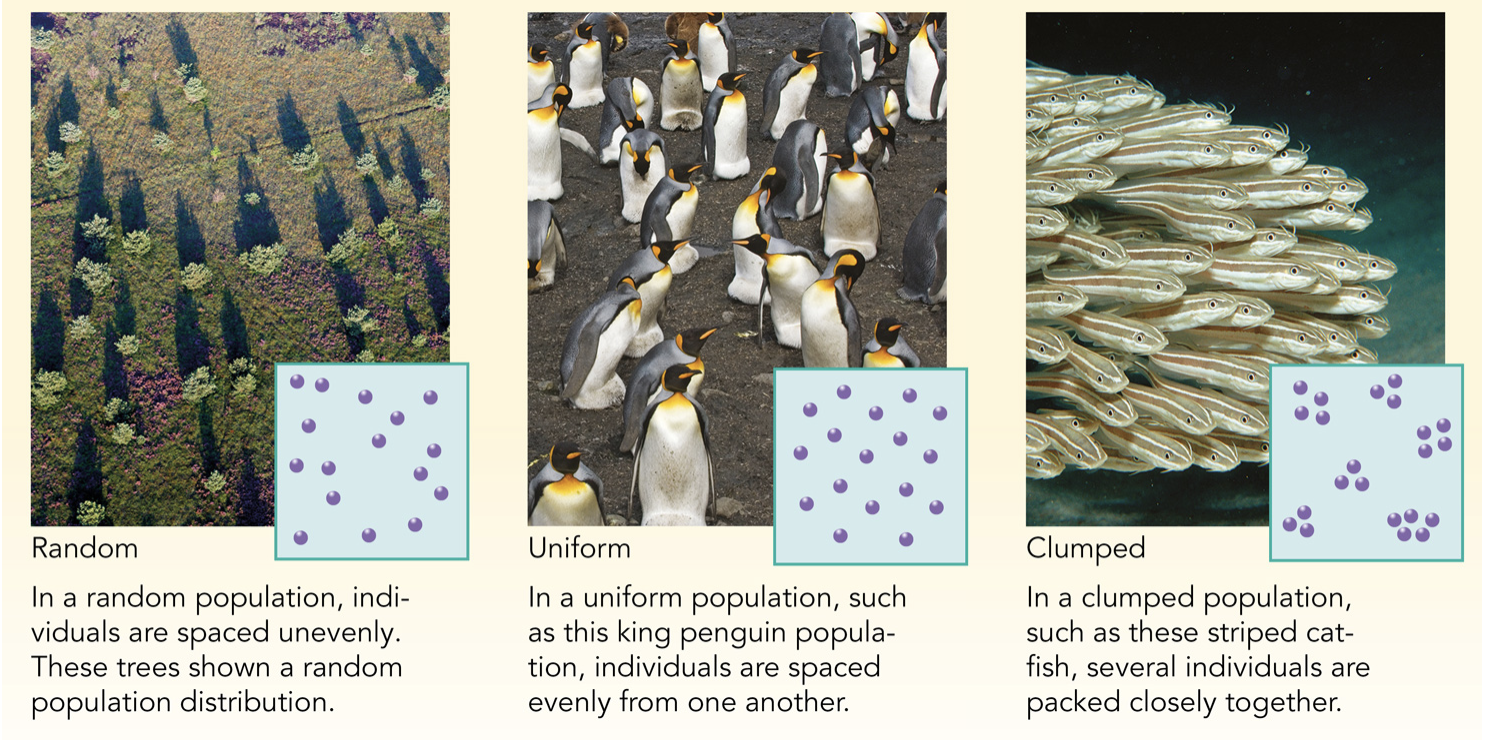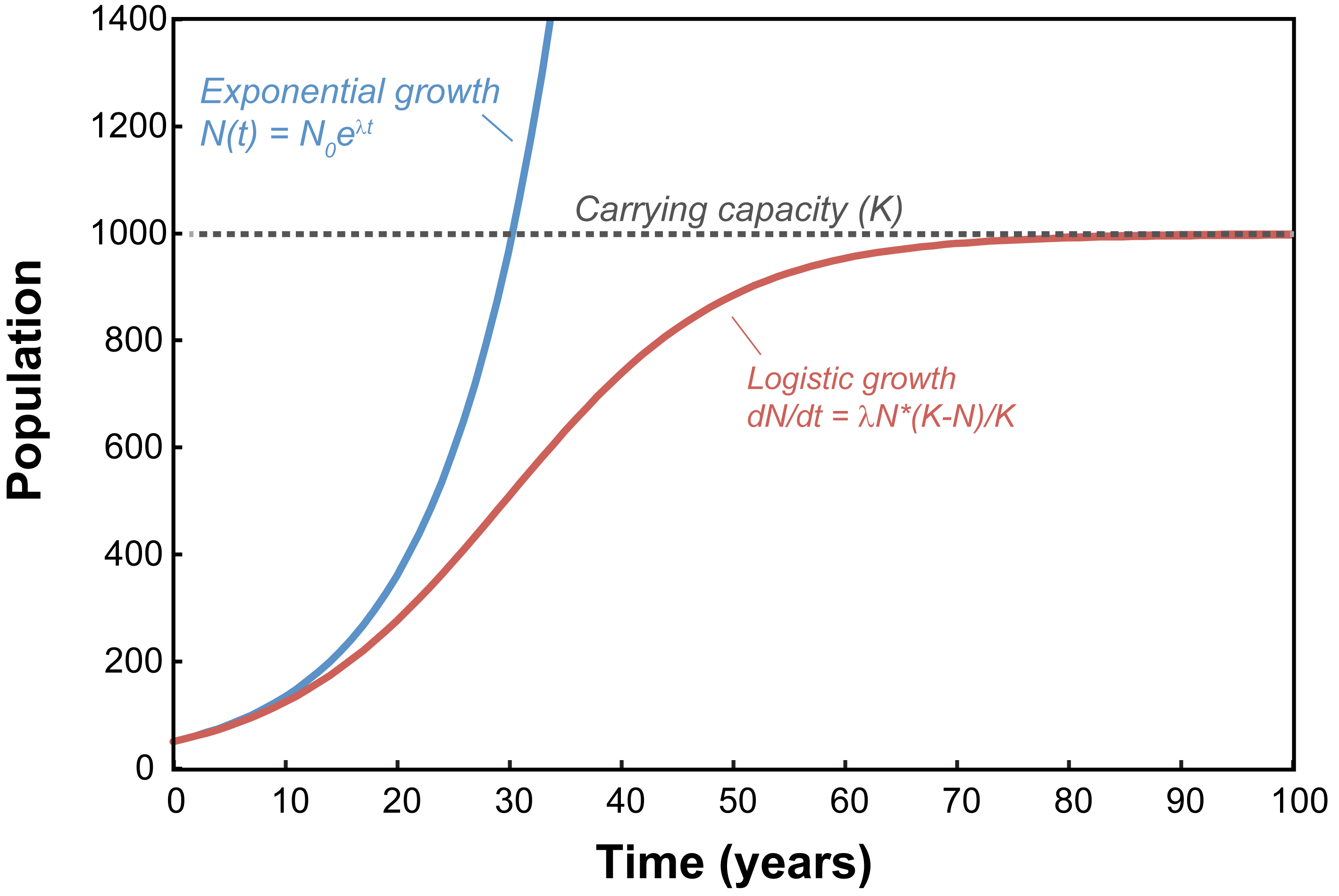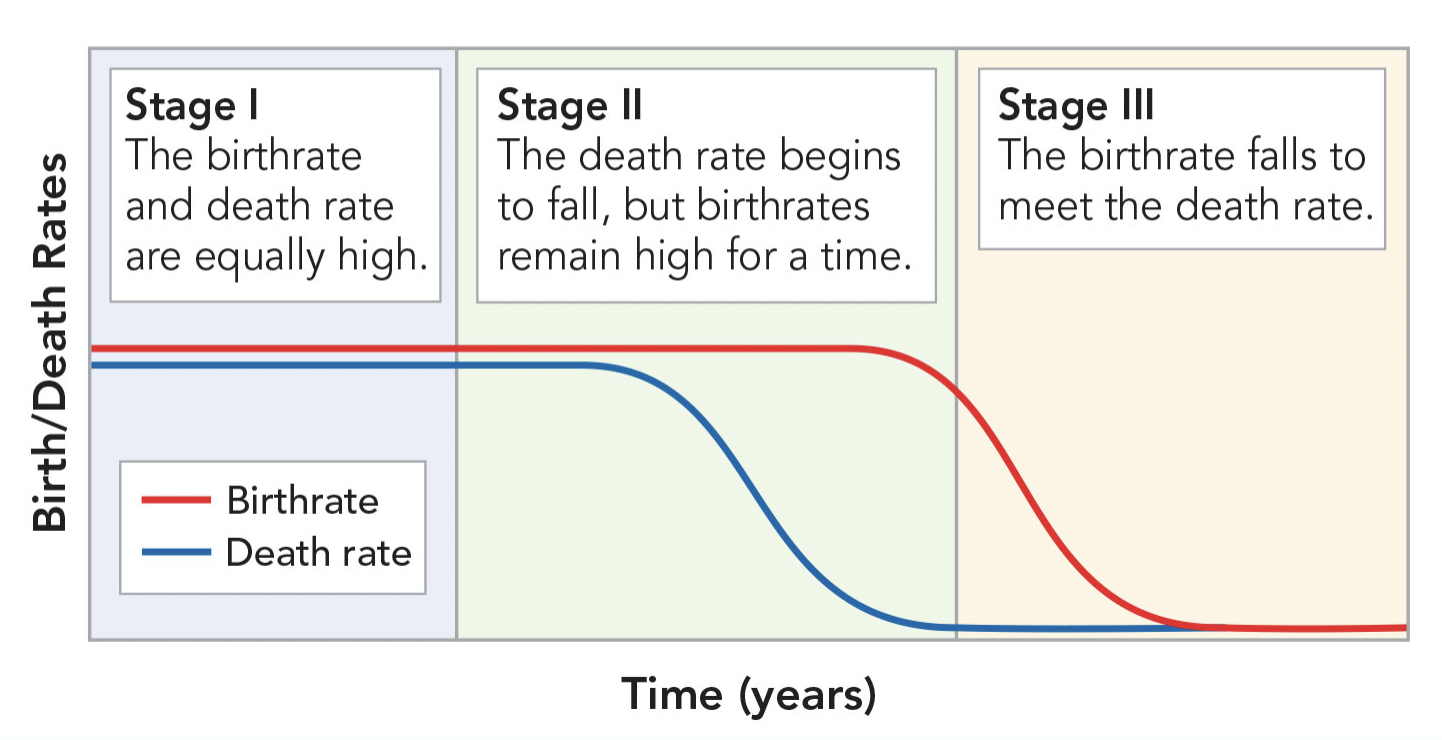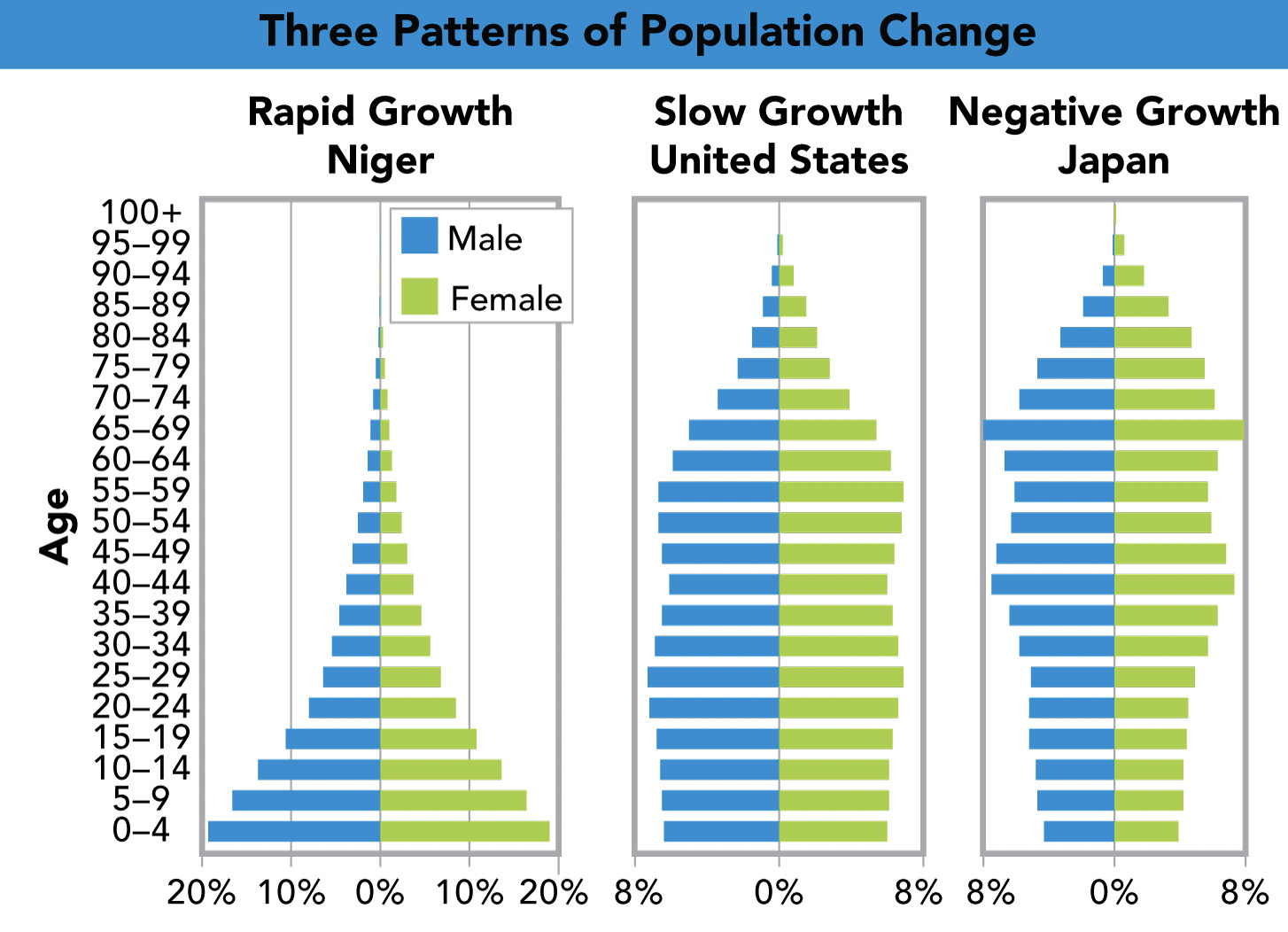Chapters 5.1 and 5.2 Populations >
5.1 How Populations Grow
Ecologists investigating species use terms such as density, distribution, growth rate, population, and age structure in order to describe their stability.
density and distribution- Individuals in a population in a given area, and how they are spread out
Uniform distribution: evenly spaced out, normally due to competition or when an organism is territorial
Clumped distribution: When organisms clump together for protective, or resource purposes.
Random distribution: No pattern, could happen with seed dispersion or wind dispersion (ex-dandelions)

Population growth- Factors that will add organisms are Births/immigration, then factors which remove are emigration/deaths. To determine the population: (Births+immigration)-(Deaths+Emigration).
Population growth determines if a population increases, decreases, or stays the same depending on how many individuals are added or subtracted from it.

Age structure*-
the x-axis is the number of individuals/percentage of the population, the y-axis is the ages, and the population is divided into males and females;* allows us to make predictions on whether a population is stable, growing, or declining (way to analyze the population, important for the government)
Geographic range*-* the area inhabited by a population *is called its geographic range. It can be made up of various places and may vary depending on the species. For example, the range of bacteria in a rotting pumpkin may be small, while the range of a species such as the lionfish spans thousands of kilometers, in many oceans. The range can increase or decrease over time, depending on various factors.
*Growth rate- how much a population grows over a period of time
When the growth rate is zero, the population size is unchanged. However when it is greater, the population is increasing; less than, decreasing
Patterns in population growth-
*Stage 1 [Exponential Growth]= under ideal conditions with unlimited resources, a population will grow exponentially (J shape)
Stage 2 [Logistic growth]=When an increase in population is met by limiting factors, causing the growth to come to a halt (S shape)
Stage 3 [Carrying capacity]=The maximum number of individuals that a particular ecosystem can support 
5.2 Limits to Growth
A limiting factor is something that causes the growth of a population to decrease, it is the factor that controls and affects the growth of a population. They may or may not be dependent on the density of the population. Regardless, they decide the carrying capacity of an environment and also make sure that a species is neither heading towards extinction nor overrunning an ecosystem.<<Limiting factors that depend on population density<< <<operate strongly when population density reaches a certain level.<< <<These factors may include:<<
✩competition
✩parasitism
✩disease
✩stress from overcrowding
✩predation/herbivory
↓
Competition causes resources to be used up sooner since the organisms are trying to use the same limited resource in the same place, at the same time.
Interspecific competition- Between members of different species
Intraspecific competition- Between members of the same species
Parasitism and disease spread quickly through dense host populations
Stress from overcrowding can lead to species fighting among themselves, causing lower birth rates, higher emigration rates, and higher death rates.
Predator-prey Relationships: As the prey population increases, the predators increase as well. The opposite applies: when the prey population decreases, the predators decrease.
Herbivore effects: as plants increase, predators increase (similar to Predator-prey)<<On the other hand, Density-Independent factors affect all populations regardless of population density.<< <<Factors may include:<<
✩Weather events
✩Natural disasters
